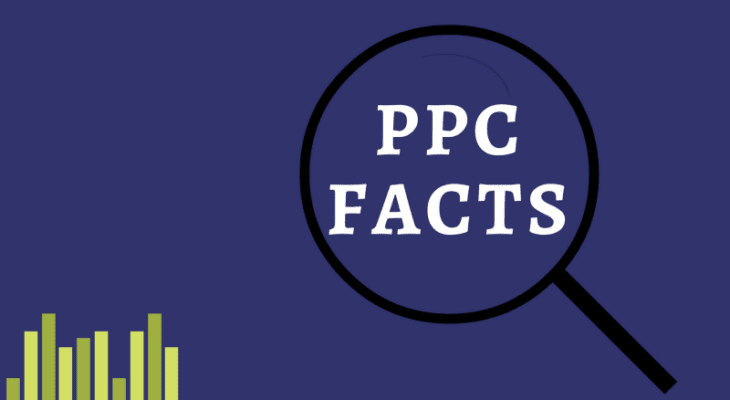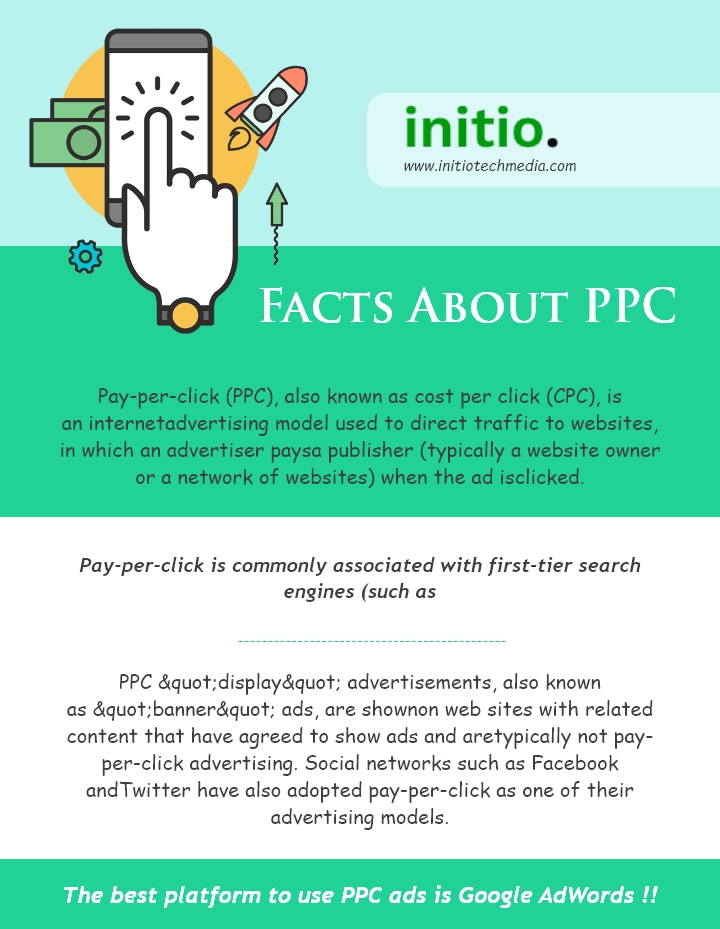Leading Mobile & web Development company which is providing Ready to publish apps & on demands application in Global Bussiness.
- 908, B Square 2, Ambli Rd, near Hotel Double tree Hilton, Vikram NagarAhmedabad-380054, Gujarat, India
- (+91) 8758432204Give us a call
- contact@initiotechmedia.com24/7 online support

Amazing Facts of PPC
- Shruti Komal
- July 16, 2019
- 0
Pay-per-click (PPC), also known as cost per click (CPC), is an internet advertising model used to direct traffic to websites, in which an advertiser pays a publisher (typically a website owner or a network of websites) when the ad is clicked.
Following are the facts of PPC
- Google drives 95% of all paid search ad clicks on mobile.
- Remarketing conversion rates increase over time
- 52% of people who click on PPC ads call the advertiser anyway
- Higher CTR = Lower CPC
- Utilize call tracking to get the full picture
- The top 3 paid ad spots get 46% of the clicks on page
- Negative keywords are incredibly important
- PPC isn’t affected by algorithm updates
- Roughly half of web users can’t tell the difference between paid and organic search results
- PPC doesn’t have to be expensive
 Google drives 95% of all paid search ad clicks on mobile:-
Google drives 95% of all paid search ad clicks on mobile:-Make sure that your PPC campaigns are mobile-optimized through and through, so you’re not missing out on this enormous and still-growing market.
Remarketingconversion rates increase over time:-
A huge percentage of website visitors will leave websites without converting in any way. Remarketing campaigns are simply a way of reminding people to finish what they’ve started, while subconsciously reinforcing your branding.In other words, you better have your company’s phone number prominently displayed on your PPC ad. Even better, take advantage of the click to call functionality that’s now offered by most major ad networks.
Higher CTR = Lower CPC:-The better your ad is, and the higher CTR you achieve, the less you’ll be paying per click. In fact, Searchenginewatch found that for the Google Display Network, every 0.1% increase in CTR results in a 20% decrease in CPC.
Utilize call tracking to get the full picture:-Ifbyphone performed a study in which they broke down the conversion rate of a single landing page by web form conversions and by phone call conversions. They found that measuring only web form conversions would result in a perceived conversion rate of 3.17% – a clear sign of an underperforming landing page.
WhatsApp us

